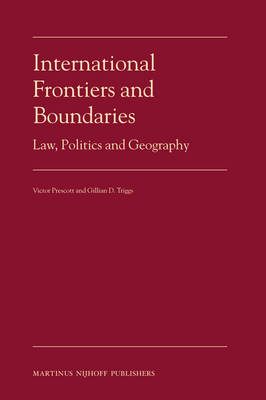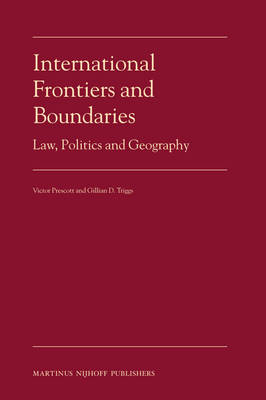
- Afhalen na 1 uur in een winkel met voorraad
- Gratis thuislevering in België vanaf € 30
- Ruim aanbod met 7 miljoen producten
- Afhalen na 1 uur in een winkel met voorraad
- Gratis thuislevering in België vanaf € 30
- Ruim aanbod met 7 miljoen producten
Zoeken
International Frontiers and Boundaries
Law, Politics and Geography
Victor Prescott, Gillian D Triggs
Hardcover | Engels
€ 421,45
+ 842 punten
Omschrijving
International frontiers and boundaries separate land, rivers and lakes subject to different sovereignties. Frontiers are zones of varying widths and they were common many centuries ago. By 1900 frontiers had almost disappeared and had been replaced by boundaries that are lines. The divisive nature of frontiers and boundaries has formed the focus of inter-disciplinary studies by economists, geographers, historians, lawyers and political scientists. Scholars from these disciplines have produced a rich literature dealing with frontiers and boundaries. The authors surveyed this extensive literature and the introduction reveals the themes which have attracted most attention.
Following the introduction the book falls into three sections. The first section deals systematically with frontiers, boundary evolution and boundary disputes. The second section considers aspects of international law related to boundaries. It includes chapters dealing with international law and territorial boundaries, maps as evidence of international boundaries and river boundaries and international law. The third section consists of seven regional chapters that examine the evolution of boundaries in the Americas, the Middle East, Africa, Asia, Europe, islands off Southeast Asia and Antarctica.
Following the introduction the book falls into three sections. The first section deals systematically with frontiers, boundary evolution and boundary disputes. The second section considers aspects of international law related to boundaries. It includes chapters dealing with international law and territorial boundaries, maps as evidence of international boundaries and river boundaries and international law. The third section consists of seven regional chapters that examine the evolution of boundaries in the Americas, the Middle East, Africa, Asia, Europe, islands off Southeast Asia and Antarctica.
Specificaties
Betrokkenen
- Auteur(s):
- Uitgeverij:
Inhoud
- Aantal bladzijden:
- 504
- Taal:
- Engels
Eigenschappen
- Productcode (EAN):
- 9789004167858
- Verschijningsdatum:
- 25/06/2008
- Uitvoering:
- Hardcover
- Formaat:
- Genaaid
- Afmetingen:
- 165 mm x 246 mm
- Gewicht:
- 952 g

Alleen bij Standaard Boekhandel
+ 842 punten op je klantenkaart van Standaard Boekhandel
Beoordelingen
We publiceren alleen reviews die voldoen aan de voorwaarden voor reviews. Bekijk onze voorwaarden voor reviews.











